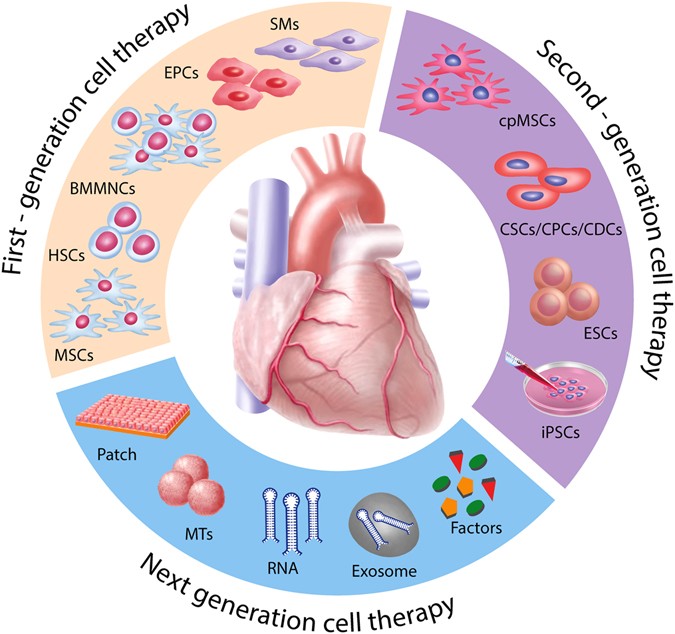Table of Contents
One is by transforming right into new heart cells that replace broken ones. In addition, they play an important function in what's called the paracrine result. This includes releasing different variables that stimulate tissue repair work and regeneration without actually becoming brand-new cells. Those factors can reduc/e inflammation, encourage new blood vessel development, and trigger your body's natural recovery processes.
Even if the cells endure, they still have to connect with the heart's electric system. Without the necessary electrical coupling, the cells can't sync with the heart's natural rhythm.
Scientists are running professional tests to figure out what sort of stem cells work best, how to deliver them securely, and exactly how to lower the general dangers involved. They are likewise working with solutions like utilizing bioengineered supportive scaffolds or gene editing to improve efficiency. Development is being made on a number of fronts, and each research obtains us a bit closer to making stem cell treatment a regular component of cardiac care.
There's also early evidence that this therapy might minimize the danger of heart failure after a cardiac arrest. Stem cell treatment isn't a cure allnot yetbut it's aiming us in the right instructions. As research continues we might soon see a future where the heart can do what as soon as appeared impossible: recover itself.

Although there are still difficulties, like cell survival and correct combination, progress is encouraging. Future methods and technologies like bioengineering and gene editing and enhancing can unlock the full capacity of stem cell therapies, offering hope for people taking care of heart problems. With cardiac stem cells, there's a possibility for your heart to recover itself, bring about better end results and a healthier future.
New hope for Arrhythmias that uses stem cells
There is no treatment method that straight reinforces the heart muscle various other than stem cell treatment. Improvements at different degrees were measured in 87% of clients getting stem cell therapy for heart failing and ischemic heart conditions. Stem cells have the ability to deal with sick blood vessels when they touch the ill vein wall and they're additionally made use of to deal with heart failing by developing into heart muscular tissue cells if there is weak point in the heart muscle mass.
Treatment is performed utilizing endothelial, mesenchymal stem cells (originated from the client's own fat or bone marrow) or fetal stem cells. Stem cells are administered intravenously to the individual. Cells need blood circulation to maintain their lives and features. This blood circulation carries oxygen and nutrients to the tissues and removes waste.
Atherosclerosis, i.e. vessel stiffness, is the main reason for full quiting of blood circulation or decreased blood circulation. Several variables such as high cholesterol, hypertension, smoking cigarettes lead to formation of plaques in the vessel wall in time and loss of elasticity of the vessel. These plaques expand over time, narrowing the vein and can protect against appropriate quantity of blood from getting in the vessel (persistent).
Heart disease treatments depend on the type and intensity of the desease. Intense disorders such as heart strikes need prompt medical treatments to lessen heart damages.
There is no treatment technique that straight strengthens the heart muscle besides stem cell treatment. Stem cells have the capability to deal with ill blood vessels when they touch the ill blood vessel wall surface. They're additionally utilized to deal with heart failing by developing into heart muscle cells if there is weak point in the heart muscular tissues.
Next-gen support for Arrhythmias with promising results
They increase the therapy of heart muscle swelling and inflammation. Endothelial stem cells (dealing with veins) are made use of for vessel walls. These stem cells are mostly stemmed from bone marrow. However, mesenchymal or fetal stem cells are used together to deal with various other elements affecting the condition. This way, the heart muscle, the basic autoimmune system and other elements are treated.
![Cardiopoietic Stem Cell Therapy Congestive Heart Failure [CHF]](https://www.cell.com/cms/10.1016/j.stem.2013.05.008/asset/fd8b590d-1e22-409e-83ef-f851f83e636d/main.assets/gr1_lrg.jpg)
The number of cells to be provided is identified according to the age and weight of the person. Treatment is lugged out making use of endothelial, mesenchymal stem cells (originated from the individual's own adipose tissue or bone marrow) or fetal stem cells. The choice is made according to the client's problem.
It boosts within a couple of hours after heart is damaged and continues to be in such degrees for up to 2 weeks. CK-MB - an unique form of Creatine Kinase enzyme, which is mainly located in heart muscular tissue.
Navigation
Latest Posts
Inside look at stem cell therapy and High Blood Pressure
Stem cell injections for Arrhythmias now available
Top clinics for stem cell therapy targeting Atherosclerosis